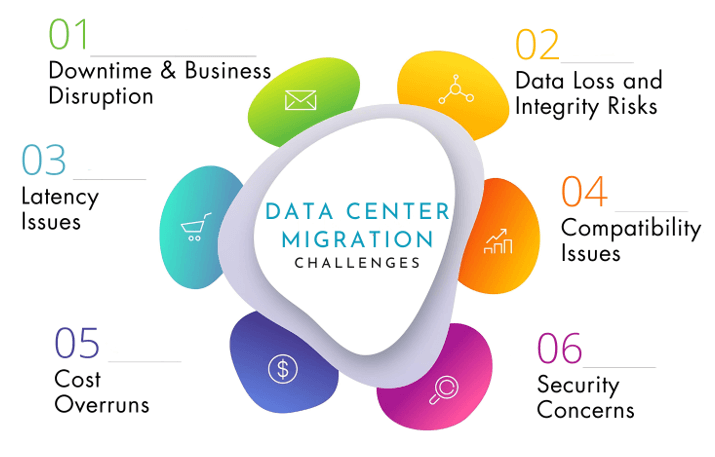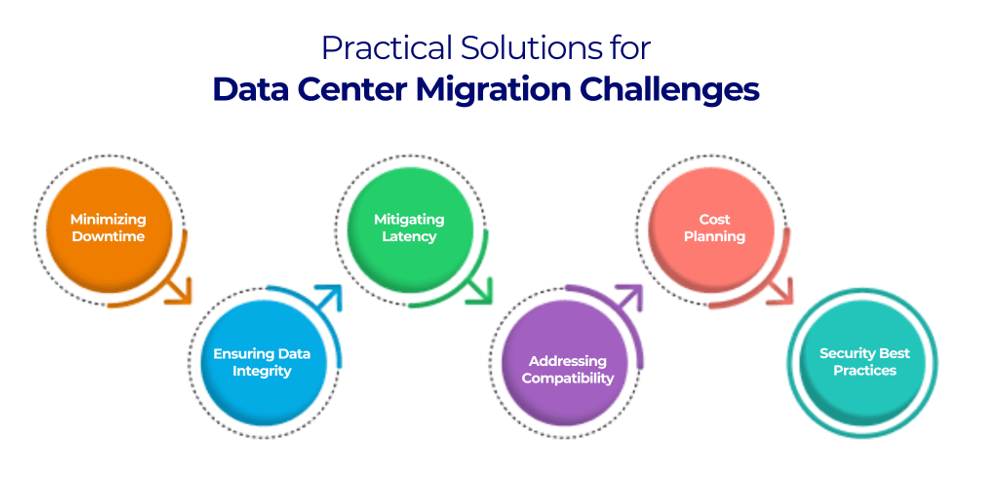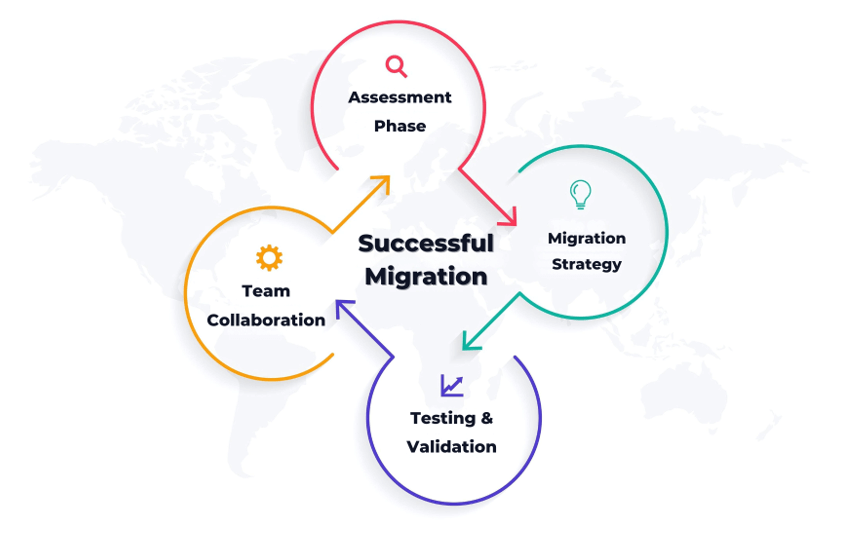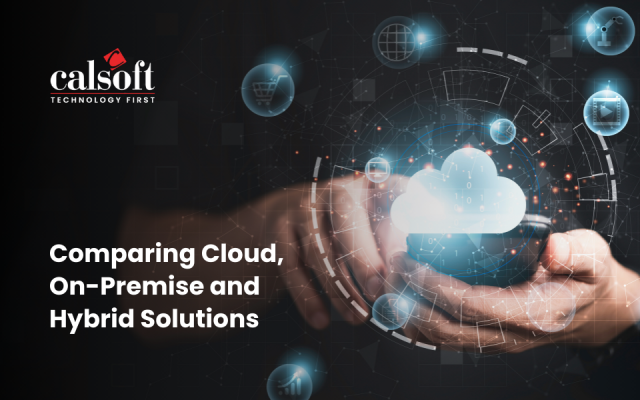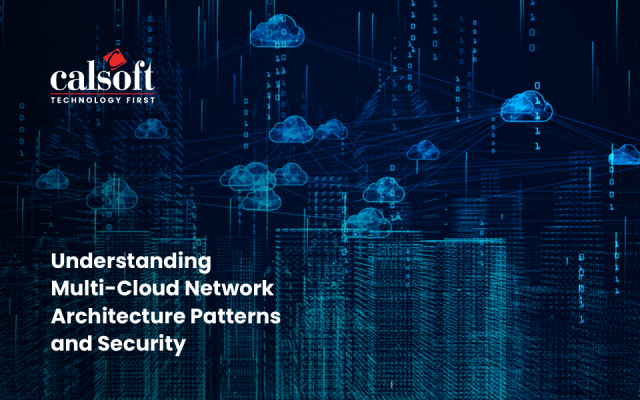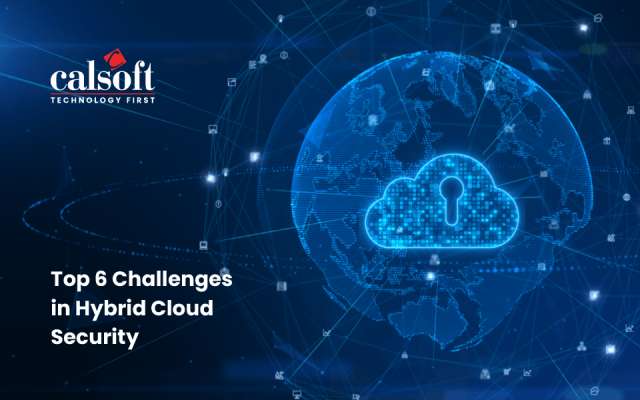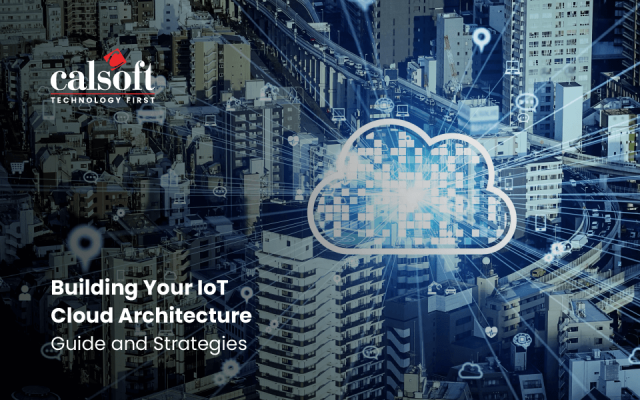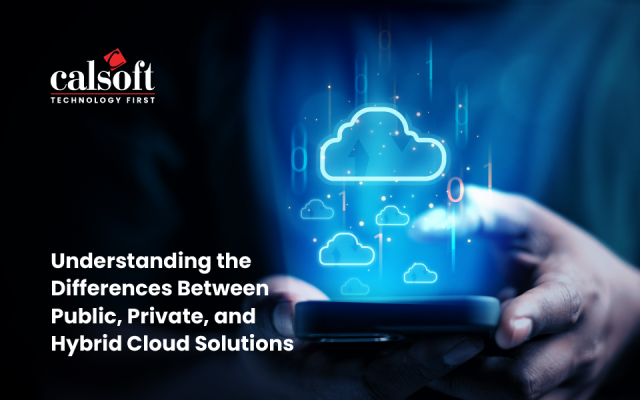What will you do when your data center migration results in unplanned downtime? Let’s say your systems go offline, and customers are locked out. With every minute that ticks, you are losing money and credibility. This is one of the critical data center migrations challenges most companies face.
Data center migration is a critical challenge for many organizations. Despite the growing trend of cloud migration, with IT decision-makers reporting accelerated adoption, unplanned downtime remains a significant risk. Gartner reports several critical challenges in data center migrations. Around 83% of data migration projects face some form of failure, with over 50% exceeding their budget.
To mitigate these risks, organizations must approach data center migration with careful planning and execution. This includes addressing potential issues such as system failures, data loss, and security breaches.
By proactively addressing these challenges, businesses can ensure a smooth transition and reap the benefits of improved scalability and efficiency. Moreover, with our strategies, you can prevent downtime and provide an easy data migration.
Ready to explore these solutions? Well, let us start.
What is Data Center Migration and the Need for it
Data center migration or relocation refers to moving an organization’s IT infrastructure, including data and applications, from one location to another location or IT infrastructure. This infrastructure could be moved to a new physical data center, a cloud environment, or even a hybrid model. At the same time, you should ensure that systems are fully operational in the new environment without business disruption.
It’s a comprehensive process that involves organized planning and relocating of your data center to a new site, facility or IT infrastructure. Migration encompasses the logical and operational migration of a data center, either physically or virtually, to a new location. For end users, this process typically refers to implementation of cloud-based or managed platforms from traditional or on-premises data center facilities.
So why do businesses take on this complicated task? Let’s break it down:
How Data Center Migration Helps
- Cost Efficiency: Relocating to more updated, efficient infrastructures can significantly reduce maintenance costs. You save energy and avoid frequent repairs with its hefty costs.
- Scalability: Modern data centers can scale up or down according to the business’s needs. Whether your workloads expand or shrink, your infrastructure can scale without overhauling.
- Improved Security: The often-relocated data center will have advanced security features like encryption and access controls. The cloud service provider will also offer a disaster recovery option to protect your data.
- Business Continuity: In the case of hardware failure, natural calamities, or other forms of disruption, a migrated data center would ensure that your operations can continue with minimal downtime because redundancy is built in.
- Simplified Management: Migration allows central system infrastructure management, monitoring, and maintenance through a single interface. That pays dividends in keeping your IT team productive.
Each of these reasons plays a vital role in future-proofing your business. Also read the blog on Streamlining Data Center Operations to get more insights on data center evolution and the strategies to streamline its operations.
Since you know the “why” behind data center migration, let’s explore the potential data center migration challenges.
6 Data Center Migration Challenges
Now, let’s discuss the typical data center migration challenges that can arise when handling large-scale projects. Understanding these risks will help you avoid significant pitfalls during the migration process.
1. Downtime and Business Disruption
One of the most significant data center migration challenges is downtime. Even a minor downtime during migration can frustrate customers and lead to revenue loss.
For businesses with 24/7 operations, this disruption can be catastrophic. Every minute your systems are down, you’re losing customers’ trust. Furthermore, it’s not just about getting back online quickly; it’s about resuming your operations smoothly and without disruptions.
2. Data Loss and Integrity Risks
Data is the lifeblood of any organization and losing data during a migration can be a significant case.
Data integrity issues come into play at this stage. Even the tiniest mistake in transferring information could lead to losing customer records or financial data errors. Recovering corrupted or lost data is costly and, in other instances, impossible. Without strong safeguards, you’re putting your whole data ecosystem at risk.
3. Latency Issues
Latency is the delay in transmitting data. It becomes a critical issue in applications that involve real-time operations, including IoT, video streaming, and e-commerce platforms.
If you haven’t planned properly, post-migration latency can increase dramatically, impacting the overall user experience. Naturally, slow loading times or delayed responses can frustrate customers and drive them away, ultimately jeopardizing the business’s long-term success.
4. Compatibility Issues
Legacy systems can often pose significant compatibility issues when migrating. These older systems may not integrate well with the new environment, resulting in software malfunctions or complete failures.
You may also notice that a cloud-based or hybrid setup would improve outdated, self-made applications or hardware. This might lead to unexpected downtime while you try to resolve these incompatibilities, thus slowing down the whole migration process.
5. Cost Overruns
Improper planning leads to cost overruns. It is a common pitfall in data center migration challenges. You may need to buy more infrastructure, pay for extended staff hours, or encounter unexpected complications that require costly solutions. A poorly planned migration will blow your budget, setting you up for financial stress long after the migration is complete.
6. Security Concerns
One of the most critical data center migration challenges is data security. In the migration process, you will likely fall victim to security breaches. Cyber attackers can target security protocol gaps to reach sensitive data. A breach during migration can lead to customer trust issues, legal trouble, and long-term impacts on your brand’s credibility.
These are all data center migration challenges. If you plan the migration well, you can avoid derailing the project. Next, we’ll discuss how you can best prepare to handle these issues effectively.
Practical Solutions for Data Center Migration Challenges
Now that you understand the data center migration challenges, let’s look at the practical solutions. Each solution will help you mitigate risks and ensure that your migration goes smoothly without disrupting business operations. Here are some actionable strategies:
Minimizing Downtime
Downtime is unavoidable during relocation, but you may reduce its impact with good planning. One of the most effective approaches is phased migration, in which you relocate pieces of your data and apps over time rather than all at once. This guarantees that you engage essential business operations throughout the process. Testing and rollback strategies are also crucial. Before the migration, test smaller components and have a rollback plan ready if anything goes wrong. First, conduct a pilot migration on a less critical part of your infrastructure. This will allow you to identify potential issues without affecting major operations.
Ensuring Data Integrity
Protecting your data during migration is non-negotiable. The key here is to implement robust data backup strategies and encryption. Always back up your data before migration, and make sure you store these backups in multiple locations. Real-time validation during the migration process is critical—constantly check that data is transferred accurately. Use automated tools for continuous backup and validation during migration. This reduces the risk of human error.
Mitigating Latency
Latency issues are particularly problematic for businesses with real-time applications. To mitigate this, you need to optimize your network and infrastructure by balancing the load across servers. These strategies ensure that you distribute your data efficiently, minimizing delays. Prioritize applications that require low latency, such as e-commerce platforms or real-time communication tools. You should place them geographically close to end-users.
Addressing Compatibility
Compatibility issues with legacy systems are common in data migration. An intelligent solution is middleware usage, which bridges old systems and new environments, ensuring they can communicate effectively. Also, a phased migration can allow you to test critical systems in the new environment before a complete migration. Start with less critical systems to identify compatibility issues early and resolve them before migrating mission-critical applications.
Cost Planning
You can avoid cost overruns with detailed budget allocation and the use of automation tools to minimize manual errors. While setting aside funds for unforeseen expenses is essential, focus on accurate cost estimation by considering these key factors:
- Infrastructure Costs: Assess the cost of cloud infrastructure, including computing power, storage, networking, and data transfer fees.
- Labor Costs: Factor in the expenses for internal IT staff, consultants, and potential contractors involved in the migration process.
- Software and Licensing Costs: Calculate the costs of new cloud-based software, licensing fees, and any necessary upgrades.
By carefully considering these cost components, you can create a more accurate budget and mitigate the risk of financial overruns during your data center migration. Invest in migration automation tools that reduce manual labor and ensure that you use resources efficiently.
Security Best Practices
Data security during relocation is crucial. Encryption, both at rest and in transit, is the primary protection. Furthermore, access control mechanisms guarantee that only authorized individuals handle sensitive data. You need to carry out compliance checks on an ongoing basis to verify that you satisfy regulatory requirements. Use multi-factor authentication and conduct frequent security audits to monitor for vulnerabilities during the transfer process.
Now that you understand how to deal with data center migration challenges, let’s examine how to implement these methods during the planning stage.
Steps to Prepare for a Successful Migration
Effective planning is crucial for a successful data center migration. You want a solid, step-by-step process that will ensure the migration goes smoothly. Let’s break down how to set your migration up for success.
Assessment Phase
First, you must know what you are working with. This is all about understanding your current infrastructure. Find out what you have, what’s outdated, and what you need to upgrade.
- Do a complete audit of your hardware, software, network, and applications.
- Identify which systems are mission-critical and which can be upgraded or phased out.
- Document everything. This will be the baseline for building the migration road map.
- Identify potential bottlenecks and risks, particularly legacy systems that may not work well with new infrastructure.
Migration Strategy
After the assessment, it is time to develop the data migration roadmap. This is the heart of the whole process. Here, you should detail every step, who is responsible for each task, and how long each phase will take.
- Break down the migration into phases. This could be by application type, criticality, or hardware. Move non-critical systems first.
- Set a timeline for each migration phase, with detailed task assignments.
- Identify critical milestones and prepare contingency plans. If something goes wrong, know when and how to roll it back.
Testing and Validation
This stage focuses on rigorous testing before, during, and after the migration process. The secret behind a smooth migration is ensuring that all systems work fine in the new environment before the big move.
- Test individual components in the new environment before migrating the entire system.
- While your system migration is in progress, run live tests to check the integrity of your data and the performance of your system.
- After migration, test that all the systems are up and working as required. Apply specific strategies in testing your migrations, such as User Acceptance Tests (UATs), to ensure there’s no disruption.
Team Collaboration
Successful migration requires strong team collaboration. From the very beginning, you must involve all relevant stakeholders, from IT teams and business leaders to vendors.
- Create a migration team that includes technical staff and business leaders.
- Hold regular check-ins and status updates.
- Ensure you have buy-in from leadership. Major projects like these need executive support to clear any roadblocks.
With the migration plan in place, it’s time to look beyond the initial move. Migration is only the beginning; the post-migration phase is equally important. During this phase, optimizing the new infrastructure is key to ensuring it operates efficiently and delivers maximum performance
Best Practices for Post-Migration Optimization
Once you’ve moved everything, you need to monitor and fine-tune your new data center. Migration is about ensuring that you continue to operate efficiently, securely, and cost-effectively in the long term.
- After the migration, you need to monitor system performance continuously. Look for bottlenecks, slowdowns, or inefficiencies that may have gone unnoticed during the initial migration.
- Once you move data and applications, new vulnerabilities may surface. Post-migration, you should focus on rigorous security checks to identify and patch any weaknesses.
- Monitor resource usage and identify areas where you may need to be over-provisioning. If you’ve moved to the cloud, ensure you’re using cost-efficient scaling options.
Post-migration isn’t just about maintaining the status quo but optimizing your system.
Parting Thoughts
The bottom line is that data center migration has less to do with moving data and more with transforming your infrastructure toward long-term growth and efficiency. While it is a genuinely complex process, you can transform your business with the right strategy at the forefront.
Data center migration comes with challenges such as avoiding business disruption, managing complex data transfers, ensuring system compatibility, safeguarding against security breaches, and controlling costs. Overcoming these difficulties requires efficient planning, testing, and the use of advanced tools. A well-executed communication plan and careful resource allocation can further help ensure a smooth and efficient migration process.
Calsoft a leading technology-first partner, providing digital and product engineering services for over 25 years, is a trusted partner for Migration Services, offering comprehensive solutions to help businesses move their data and resources safely and efficiently. Our team of certified and experienced engineers helps businesses minimize disruption while ensuring data integrity, security, and availability.

